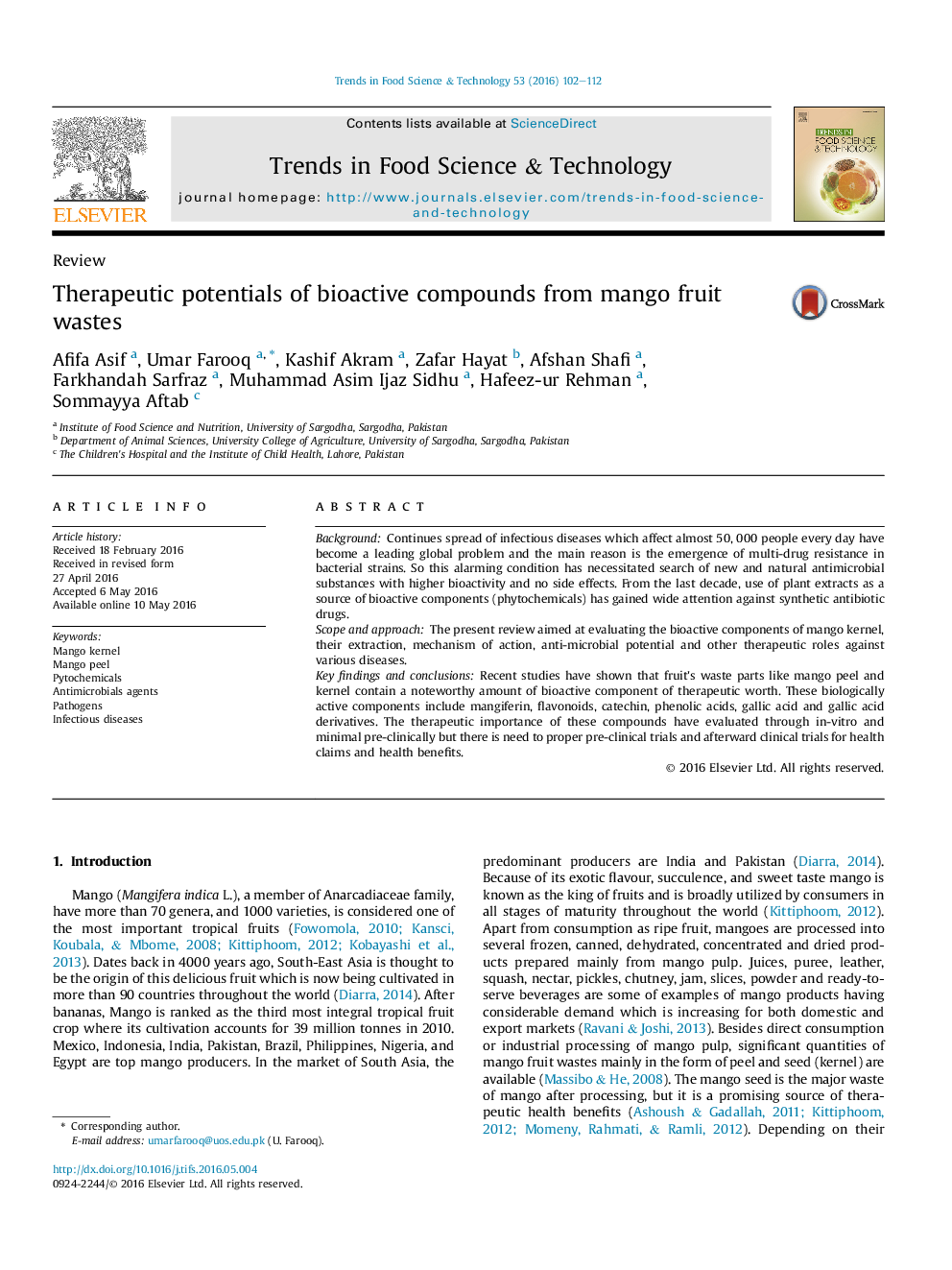| Article ID | Journal | Published Year | Pages | File Type |
|---|---|---|---|---|
| 2098442 | Trends in Food Science & Technology | 2016 | 11 Pages |
•Research has elaborated the antimicrobial and other therapeutic importance of mango waste bioactive compounds.•Mango fruit is used as a potential source for the bioactive compounds.•These bioactive compounds are responsible for the therapeutic properties of mango fruit wastes.•Mango fruit waste has great potential to be used as antimicrobial agent.
BackgroundContinues spread of infectious diseases which affect almost 50, 000 people every day have become a leading global problem and the main reason is the emergence of multi-drug resistance in bacterial strains. So this alarming condition has necessitated search of new and natural antimicrobial substances with higher bioactivity and no side effects. From the last decade, use of plant extracts as a source of bioactive components (phytochemicals) has gained wide attention against synthetic antibiotic drugs.Scope and approachThe present review aimed at evaluating the bioactive components of mango kernel, their extraction, mechanism of action, anti-microbial potential and other therapeutic roles against various diseases.Key findings and conclusionsRecent studies have shown that fruit's waste parts like mango peel and kernel contain a noteworthy amount of bioactive component of therapeutic worth. These biologically active components include mangiferin, flavonoids, catechin, phenolic acids, gallic acid and gallic acid derivatives. The therapeutic importance of these compounds have evaluated through in-vitro and minimal pre-clinically but there is need to proper pre-clinical trials and afterward clinical trials for health claims and health benefits.
